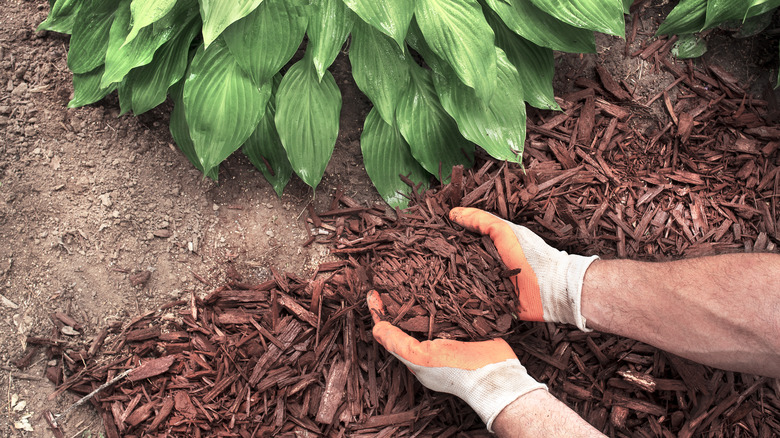If you’ve ever tackled your own landscaping, you’ve likely experienced the challenge of laying down mulch and how tricky it can be to get it in all the critical areas. It might be tempting to skip it, but mulch is essential in landscaping and gardening. Mulch is the insulation that protects against environmental stressors, conserves moisture in the soil, moderates soil temperature fluctuations, and delivers essential nutrients for healthy plants. It’s also a practical way to control weeds. Applying thick layers of organic mulches over weed-prone areas can significantly suppress weed growth without using herbicides.
Once you’ve determined what type of mulch you want to use — wood chips, shredded bark, or the like, the next step is to prepare your yard for the job. Begin by clearing any bushes or low-lying branches that may be in the way, and make sure there’s no debris on the ground where you plan to spread the mulch. To move the mulch, you’ll want a garden cart or wheelbarrow, and you’ll select the type of tools to apply it depending on the size of the targeted area. For larger sites, a spreader is a handy tool; for smaller spaces, according to Mr. Mulch, a square-point shovel works well for wood chip-style mulch. This application technique is perfect for areas with no blooms or plants, but adding fresh mulch to an established garden can be tricky.
This mulching hack will save your aching back

Applying mulch to areas where flowers have sprung requires a different technique. First, Bustling Nest recommends creating a mulch-free zone that extends at least a few inches from plants or trees, which encourages airflow and helps to avoid rot, disease, and other problems such as insect infestation. Then, load the mulch into small, easy-to-carry containers. An easy way to do this is by lining up empty buckets into the wheelbarrow or cart and dumping the mulch straight from the bag (or with a shovel) over the containers to fill them.
Simply grab one of the small buckets you filled with mulch and carry it to one of the hard-to-reach areas of the garden. Wood mulch particles can be irritating to sensitive skin, so be sure to wear gloves when handling them. Then, using your hands, carefully spread it near plants and flowers, leaving room for airflow. Be careful to lay down a minimum of 2 to 4 inches of mulch — too little will allow weeds to push through easily, and too much can make it difficult for water to get through to the roots of plants. Keep this handy trick in mind when redoing your mulch, which should be done each year.